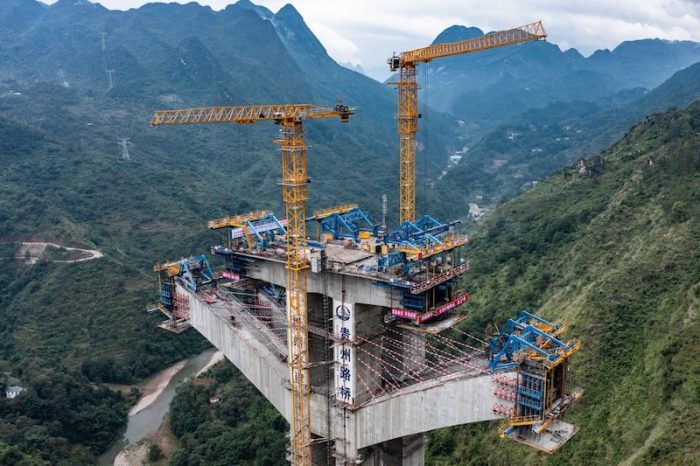China approved new fiscal support on Friday to reinvigorate its cooling economy with a large package that will ease debt repayment strains for local governments.
Finance Minister Lan Foan also signalled that further stimulus is being considered.
The world’s second-largest economy has sputtered over the past year, facing strong deflationary pressures amid weak demand, a property crisis and mounting financing strains on local governments. The outlook was further clouded by the US election win by Donald Trump, who has threatened tariffs in excess of 60% on all Chinese goods.
ALSO SEE: China ‘More Vulnerable to Trump Tariffs’ After Slowdown
Beijing will let local governments allocate 10 trillion yuan ($1.4 trillion) towards reducing off-balance sheet, or “hidden” debts, officials said on Friday after a week-long parliamentary meeting.
But no moves were disclosed on how policymakers plan to boost sluggish consumer demand, which many investors had hoped for.
Bid to reduce local debt risks
Local governments’ debt quota will be raised by 6 trillion yuan and they will be able to use another 4 trillion yuan in issuance that has already been approved to finance the debt swaps, in a bid to reduce systemic financial risks.
China’s top legislative body, the standing committee of the National People’s Congress (NPC), approved a bill raising the ceiling for local governments to issue special bonds to 35.52 trillion yuan from 29.52 trillion.
“I don’t see anything that exceeds expectations,” Huang Xuefeng, research director at Shanghai Anfang Private Fund Co, in Shanghai, said.
“It’s not huge if you look at the fiscal shortfalls due to the economic slowdown and land sales slump. The money is used to replace hidden debts, which means it doesn’t create new work flows, so the support to GDP growth is not that direct.”
The debt swaps, which were flagged last week, aim to resolve local debt risks, Xu Hongcai, the vice chairman of the financial and economic affairs committee of the NPC, told a press conference in Beijing.
Finance Minister Lan, sitting next to Xu, said authorities will issue policies to support state sector purchases of unsold apartments and reclaim undeveloped residential land from property developers, as well as replenish the capital of big state banks.
Lan did not give details on the size or timing of those measures.
Larger-than-expected monetary stimulus in September fuelled unfettered investor speculation about a complementing, blockbuster fiscal programme to immediately boost activity, sending China shares sharply higher.
But the debt swaps aim to repair damaged balance sheets and act as a growth stabiliser, rather than a potent growth stimulant.
Mountain of debt since 2008
China is struggling to tackle the side-effects from a mountain of debt left from previous stimulus since the global crisis of 2008 and 2009.
This includes ‘hidden debt’ mainly racked up by local government financing vehicles (LGFVs), raised for infrastructure projects authorities deemed critical for development.
That debt overhang leaves them little room to fund new projects to boost ailing economic activity, however.
Lan said “hidden debt” of local governments stood at 14.3 trillion yuan at the end of 2023, which authorities planned to trim to 2.3 trillion yuan by 2028.
However, the International Monetary Fund estimated that debts of LGVFs amounted to four times that amount – 60 trillion yuan – at the end of 2023, or 47.6% of GDP.
The debt swaps were expected to save 600 billion yuan in interest for local governments over five years.
LGFVs’ debt pile – including loans, bonds and shadow credits – are seen as a growing source of systemic risk in China’s financial system, especially in a shaky economy.
Central and local government debt totalled 147 trillion yuan at the end of 2023, or 117% of GDP, according to the IMF.
- Reuters with additional editing by Jim Pollard
ALSO SEE:
Concerns Over Trump Cutting Bilateral Meetings With China
China Facing More Trade Rivalry as Trump Claims Poll Win
China ‘May Issue $1.4 Trillion in Extra Debt Over a Few Years’
EV Shift to Have Far-Reaching Impact on Trade, Employment: IMF
IMF Tips 3.2% Global Growth, Warns China on Property Crisis
























